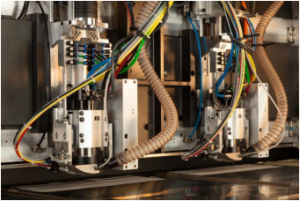The Challenge
In many advanced industries, machine builders are constantly pushing the requirements of spindle technology in the quest for higher productivity, greater accuracy, and a longer lifetime. Conventional bearing systems, usually ball bearings, cannot always deliver the very high speeds demanded by these industries whilst still maintaining high rotational precision, thermal stability, and long service life. This is primarily due to the mechanical contact between the balls and the races, which can result in rapid wear and excessive heat generation at high rpm’s, leading to a loss in accuracy and even premature failure of the bearing.
In addition, some of these industries require oil-free bearing systems to avoid workpiece or environmental contamination, particularly in a cleanroom application.
























